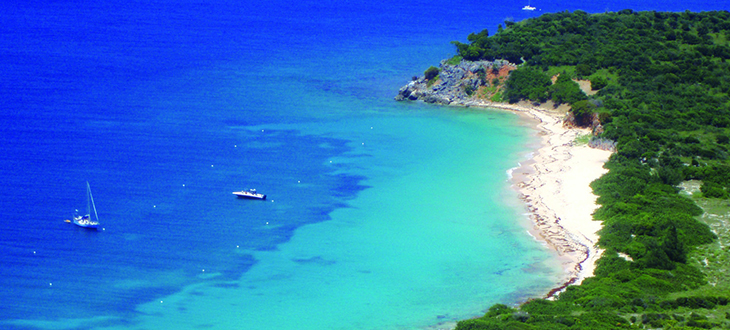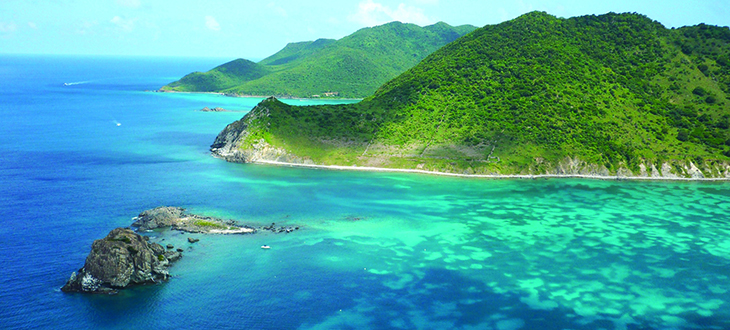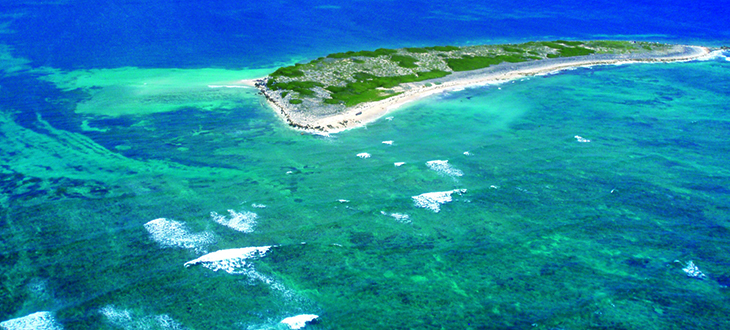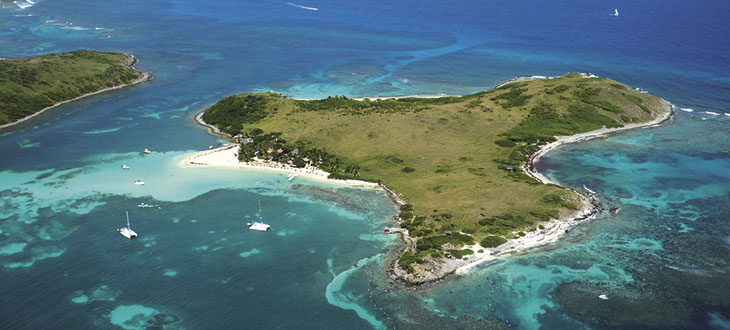Uninhabited, Tintamare is part of Saint Martin’s natural reserve and is environmentally protected.
The name of this undeveloped little island comes from the Spanish «tinta mare».
The color of the sea. A crystal‐clear turquoise that you want to dive into immediately, in the anchorage located on the southwest of the island, in front of a beach of soft white sand.
17 permanent yellow moorings placed at the disposition of boat ‐ up to 50 feet ou up to 15 tons ‐ by the Réserve Naturelle help limit damage to coral and plant beds.
Boats under 33 feet are allowed to drop an anchor, but only on a sandy bottom.
A very pretty site for snorkeling along the length of the north point is accessible by just a few flipper strokes. Wearing at least a pair of flip‐flops, it is possible for those curious enough to adventure behind the beach into the scrub.
The landscape includes the hulls and motors of airplanes abandoned by pilots and those engaged in contraband when an airstrip here was active from 1944‐1952.
The Marine Park requests that all boats respect the tranquility of this protected zones, the only nesting place for the Brown Noddy, an endangered species of bird who destroys its nest if it is disturbed.
Ecologically fragile sites to discover
Creole Rock is located within the limits of the Marine Park, and as such is environmentally protected and ruled.
It is possible for boats to enter this area as long as they use the moorings that have been made available. Attached using long sand screws, these moorings are reserved for dive clubs, pleasure boats up to 50 ft, dinghies and other small sailboats.
It is of utmost importance to use the correct buoy, in order to not do any damage to the moorings.
Creole Rock is one of the best dive spots on the French side of St Martin, both for beginners and experienced divers. The water is not very deep here, making it the perfect place to learn to dive, with and without air tanks.
It is forbidden to use any motors within a zone of 30 meters from the beach, as well as diesmebarking on the beach and scaling the rock itself, where brown boobies and tropic birds make their nests.
One of most interesting things about Green Cay is its proximity to Orient Bay, and the internationally known (clothing optional) Orient Beach.
The mooring zone is within the Natural reserve but becomes untenable when there are swells from the north.
The snorkeling site just east of Green Cay is superb. Placed under the protection of the Natural reserve, fishing is forbidden, which allows fauna and flora to develop freely.
A popular tourist destination, Pinel Island is a perfect little paradise, but often overrun with crowds, but tranquility is restored after 4:30pm when the last ferry leaves.
The island is included in the Marine Park, which means that jet skis and fishing are prohibited. Access to Pinel by boat is tricky and it is a must to use the passage between Green Cay and Pinel.
15 permanent yellow moorings placed at the disposition of boat – up to 40 feet or 10 tons – by the Réserve Naturelle help limit damage to plant beds.
Boats under 33 ft are allowed to drop an anchor, but only on a sandy bottom.
Starting on the beach, the Ecosnorkeling path allows the public to discover the world of protected underwater flora and fauna.
A professional guide, also marine biologist, rents equipment and accompanies divers (no air tanks).
Ashore, you can stroll along a botany path, equipped with shaded wooden shelters and two observation points.
The village of Cul‐de‐Sac is easily accessible after tying your dinghy to a pontoon and walking about 10 minutes.
A grocery and drug store, located on the main road, are well‐stocked.



















